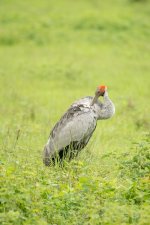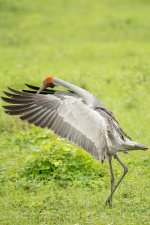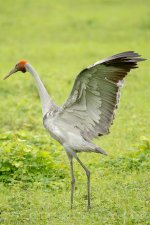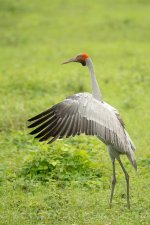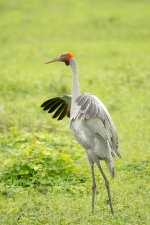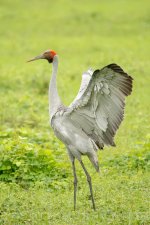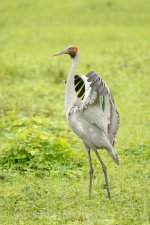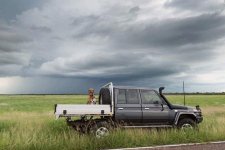BROLGA
(Grus rubicundus)
There is perhaps no more stately Australian bird than the pale grey, long legged Brolga. When dancing, Brolgas line up roughly opposite each other before starting movements: they step forwards on the long, stilt legs with wings half-open and shaking. Bowing and bobbing their heads advance and retire. Now and then the bird will stop and, throwing its head back trumpet wildly. They sometimes leap into the air a meter or so and parachute back to the ground using their broad wings. The Brolga is sensitive to habitat impacts and changes such as loss of shallow marshes, which they use for breeding and altered flows of waterways. Populations have been significantly reduced since European settlement. They are the only crane endemic to the Australian region and tend to migrate between breeding and non-breeding sites.
Habitat
Brolgas are found in open swamplands of coastal and sub coastal tropical Australia, ranging from the eastern interior to a small local population through Murray Darling Basin and Western Victoria.
Diet
Brolgas feed on tubers of sedges, which they dig up from underground with their bills. They also take grain, mollusks and insects.
Breeding
The Brolga breeds between September and December in the south and February to June in the North. In the wet seasons, Brolgas return to their breeding grounds in shallow swamplands and space themselves out in pairs to nest. They build a platform of dry grass and sedges about 1.5m diameter. Usually two cream eggs with reddish markings are laid and both sexes incubate them for 28-30 days.
Dancing
The Brolga and other cranes have elaborate courtship displays. This mating dance is what Brolgas are most famous for. With wings spread and facing each other, the two Brolgas jump, dance and pirouette, prance about and perform with a lot of head movement. Brolgas will often jump a metre into the air with wings outspread, or they will beat their wings whilst taking a few steps forward. At the same time they make loud trumpeting calls to each other. Although primarily a mating ritual, such displays do occur all year round, but to a much lesser degree.


